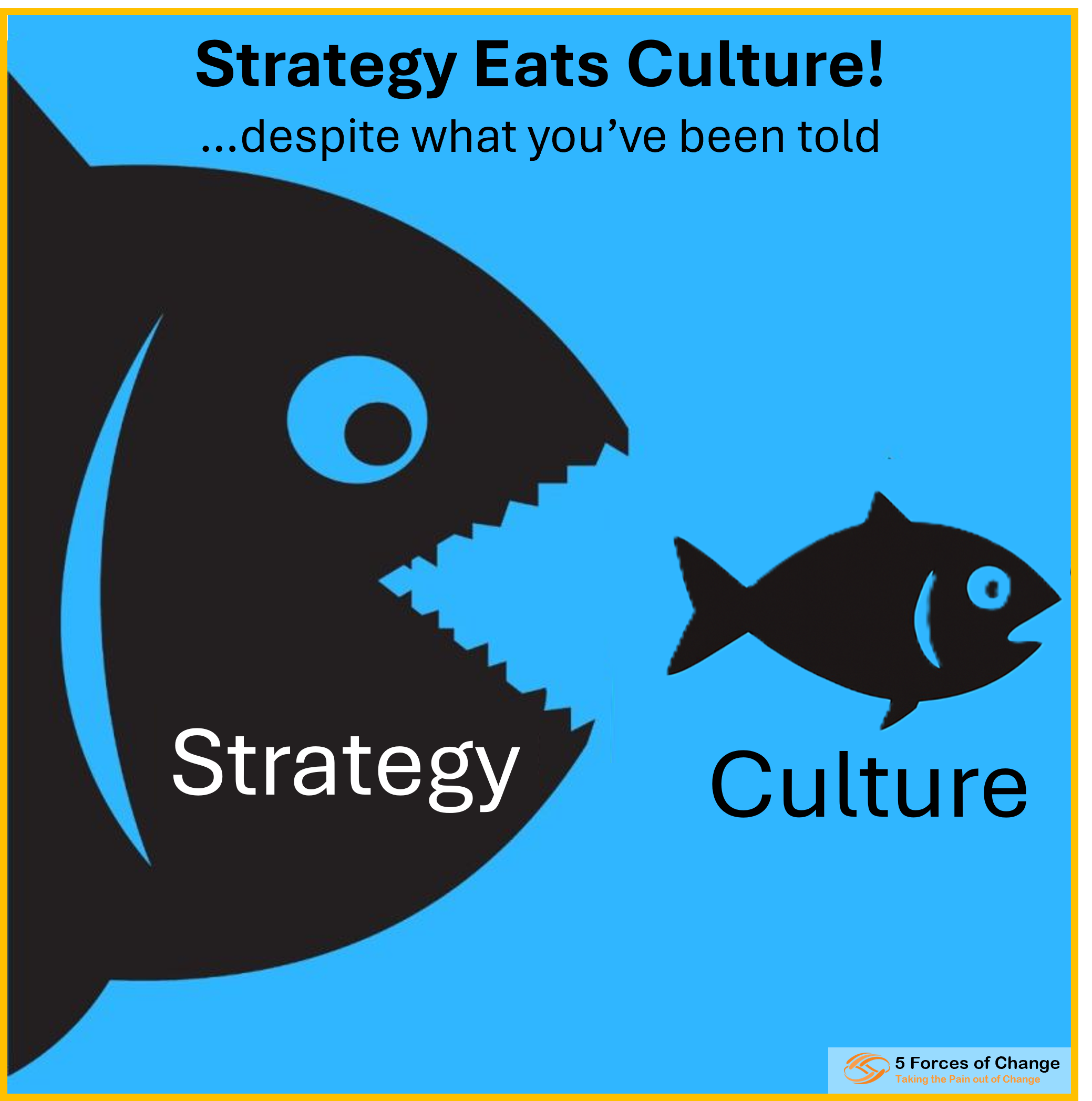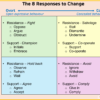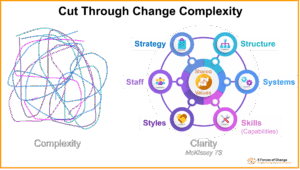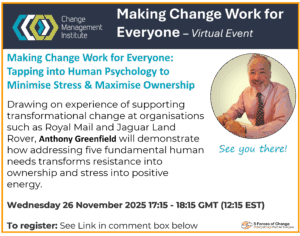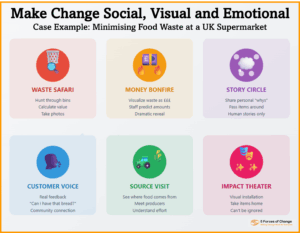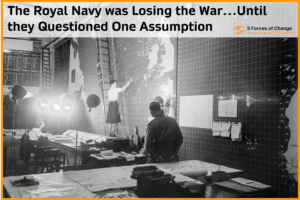Peter Drucker’s famous quote has become one of the most misapplied pieces of business wisdom in modern leadership. “Culture eats str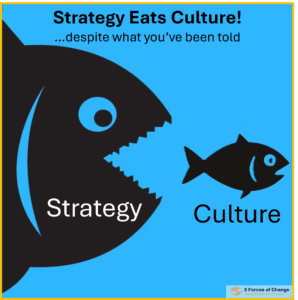 ategy for breakfast” rolls off the tongue with such authority that it’s become an accepted truth and a convenient excuse for strategic failure. Strategy Eats Culture! (despite what you’ve been told).
ategy for breakfast” rolls off the tongue with such authority that it’s become an accepted truth and a convenient excuse for strategic failure. Strategy Eats Culture! (despite what you’ve been told).
The Real Problem with the Culture-First Mindset
When executives tell me “our culture killed our strategy,” what they’re really admitting is: “We didn’t think strategically about the culture we needed to succeed.” They’ve treated culture as some mystical, unchangeable force rather than what it actually is—a controllable business asset that can be deliberately shaped and transformed.
The truth is that a well-constructed strategy doesn’t get eaten by culture. It systematically transforms culture into competitive advantage.
Culture isn’t some immovable object that destroys strategic plans. It’s the outcome of hundreds of daily decisions, systems, processes, and leadership behaviors. And if those elements can be influenced—which they absolutely can—then culture can be transformed.
How Strategy Should Eat Culture
Effective strategic leaders understand that cultural transformation isn’t a hope-and-pray exercise. It’s a systematic process that requires three deliberate actions:
1. Make Culture Change Explicit
The biggest mistake leaders make is assuming culture will naturally follow strategy. It won’t. Culture change must be designed into your strategy from day one, with the same rigor you’d apply to financial targets or operational metrics.
Consider our work with a mid-sized bank struggling with customer satisfaction scores. Rather than simply targeting “better service,” their strategy explicitly aimed to build a “Customer First” decision-making culture. This wasn’t fluffy mission statement language—it came with visible metrics, reward systems, and behavioral expectations that were tracked as rigorously as quarterly earnings. See Strategy Map below.
The strategy map we developed didn’t just show what they wanted to achieve; it showed how cultural transformation would drive every level of performance, from learning and growth objectives through internal processes, customer outcomes, and ultimately financial results.
2. Create Capability-Culture Loops
Culture changes when people can actually DO things differently. This requires creating reinforcing loops between new capabilities, new behaviors, and emergin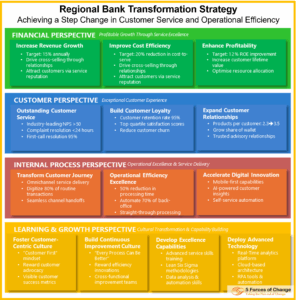 g cultural norms.
g cultural norms.
In our banking example, we linked specific capability development to cultural transformation:
- New Skills (service excellence training) → New Behaviors (customer-centric decision-making) → New Culture (customer obsession becoming “how we do things here”)
- Process Tools (Lean Six Sigma methodologies) and Continuous Improvement Capabilities → Efficiency Mindset → Continuous Improvement Culture embedded in daily operations
The key insight? You can’t just train people and hope culture follows. You need to give them new tools, new processes, and new ways of working that make the desired behaviors easier than the old ones.
3. Align Systems with Cultural Aspirations
Want a collaborative culture? Then design collaborative systems. Want innovation? Build systems that reward experimentation and intelligent failure. Want customer focus? Make customer metrics visible and tie them to everyone’s success.
Our banking strategy included cross-functional project teams, rapid experimentation protocols, and knowledge-sharing platforms. Not because they sounded good, but because they systematically reinforced the collaborative, learning-oriented culture the strategy required.
Systems drive behavior. Behavior drives culture. Therefore, strategic systems design drives cultural transformation.
The Strategic Leader’s Cultural Transformation Toolkit
Smart leaders treat culture as a controllable variable in their strategic equation. They ask:
- What cultural attributes does our strategy require to succeed?
- What current cultural elements will support or hinder our strategic goals?
- How can we systematically reinforce desired behaviors while eliminating counterproductive ones?
- What systems, processes, and incentives need to change to support our target culture?
The Bottom Line
Culture doesn’t eat strategy. Bad strategy gets eaten by culture—because bad strategy ignores culture entirely.
Good strategy recognizes that culture is not a constraint to work around, but a powerful lever to be pulled. It understands that every strategic initiative is also a culture change initiative, whether you acknowledge it or not.
The most successful transformations happen when leaders stop treating culture as an immovable force and start wielding strategy as a deliberate cultural transformation tool.
So the next time someone tells you “culture eats strategy for breakfast,” challenge them. Ask them what they’re doing to ensure their strategy transforms culture instead.
Because in the end, strategy doesn’t just eat culture—it digests it, transforms it, and turns it into sustainable competitive advantage.

